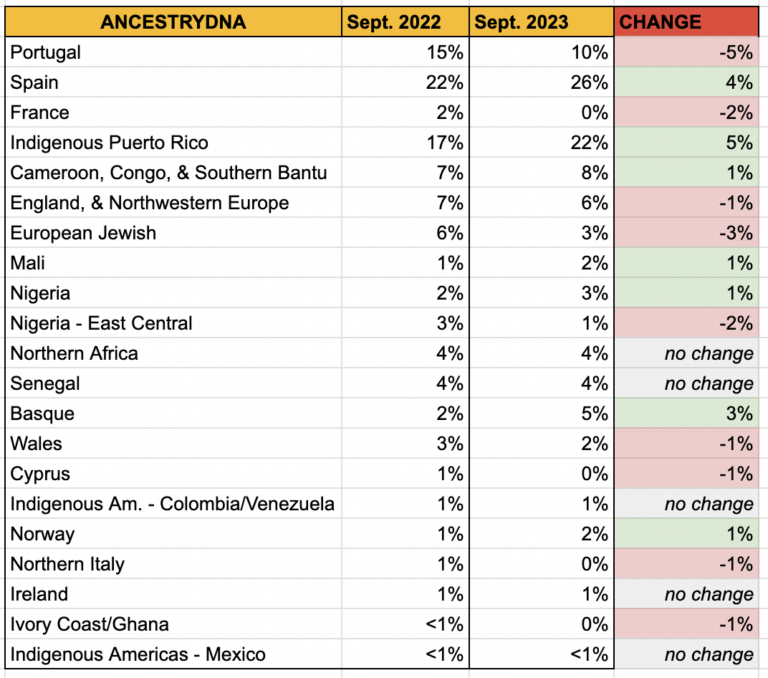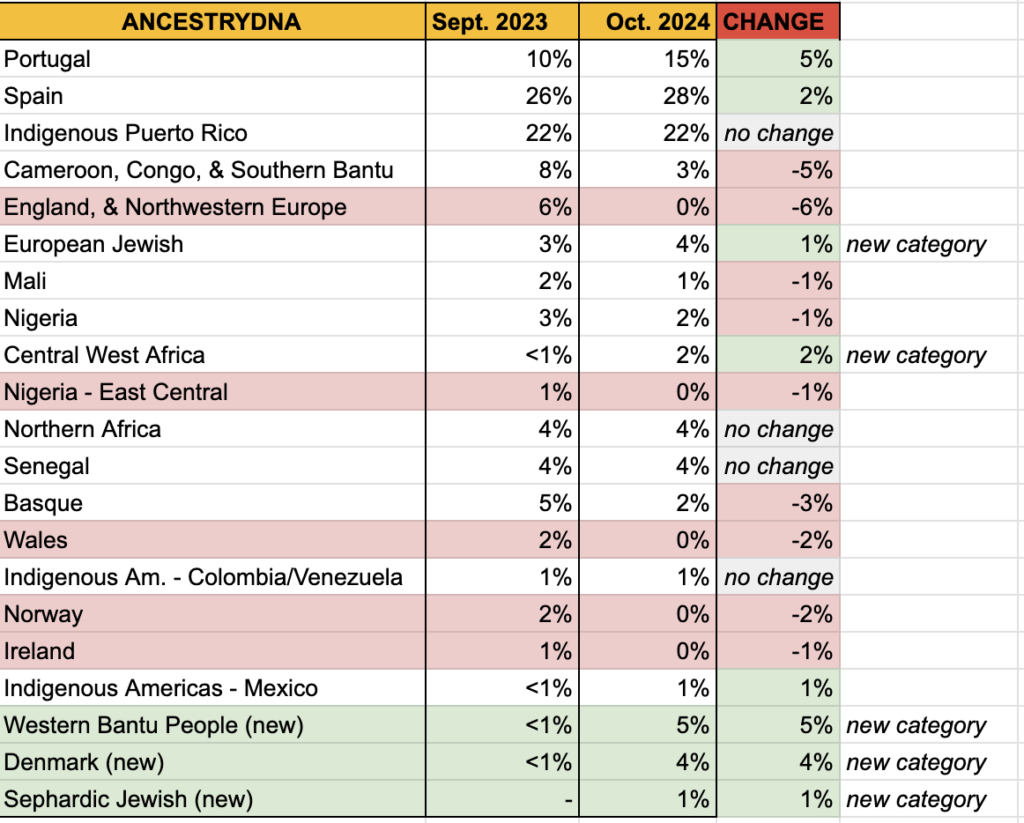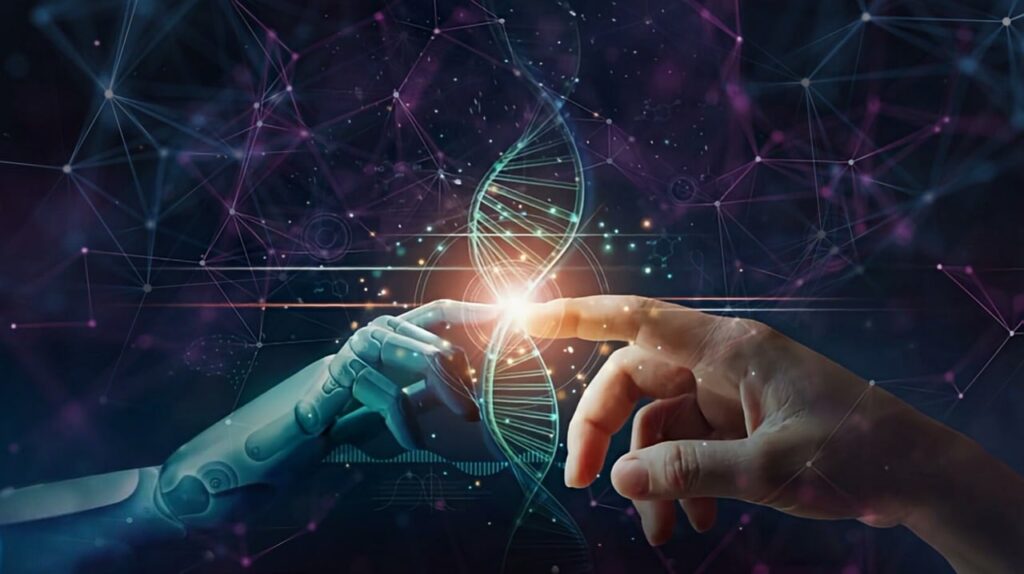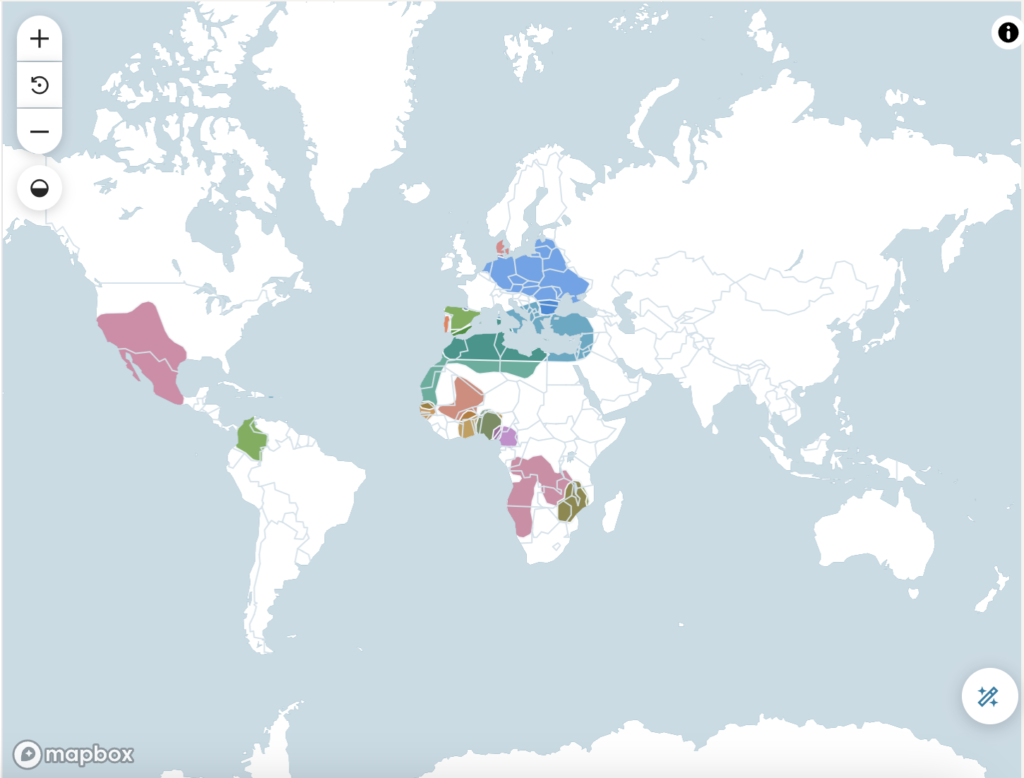There has been a lot of buzz this week around AncestryDNA’s recent update with their DNA percentages. A lot of people have logged in and either been pleasantly surprised, utterly shocked, and somewhere in between. I wanted to share how my percentages have changed and my take on it.
Caveat: I am no DNA expert but overtime I have seen my percentages change and it has been about 13 years since I originally tested my DNA, so I would definitely say I have a bit of a grasp on my DNA results.
bACKGROUND
Last year in 2023, we also saw a summer update. You can read my post from last year where I took a look at how the percentages rose and fell and what I thought about it. If you simply want a TL;DR (Too long; didn’t read) summary, you can look at the chart below to get a general gist of my changed percentages.

So this year I decided to do the same thing, I wanted to compare my results from 2023 to my new results in 2024 and see what changed, which new categories were added, and which completely disappeared. Ancestry does provide a downloadable PDF where you can see the differences; however, it required two screenshots and I feel that my chart is clearer since I add the colors of increases (green), decreases (red), and no changes (gray) in a way that I can clearly understand.
So let’s take a look!
New Results - October 2024

Above you can see how my results changed. Some categories went down completely to zero such as England & Northwestern Europe, Wales, Norway, Ireland, and Nigeria – East Central. I would agree that most of these make sense, especially the 6% English/Northwestern European DNA.
However, a new category was added that surprised me – Denmark at 4%. I do not have any Danish ancestors and though of course there is a possibility of DNA making its way across the continent, it would likely be much older than the 1700s where I have most of my ancestors traced back to this time period.
Similarly, some categories broke off into new ones – such as European Jewish becoming Ashkenazi and Sephardic and Nigeria becoming Central West Africa. I also got Western Bantu People. The Sephardic addition was interesting because I have found traces of Sephardic ancestors hidden amongst my tree far back in history; however, this is the first time Ancestry has divided the two groups. Though I still have 4% Ashkenazi, I am sure this will likely change as I do not have any recent Ashkenazi Jewish ancestors.
Lastly, some categories completely went away such as France, Cyprus, Northern Italy, Ivory Coast/Ghana. Most make sense except I would have expected some potential French to stay via the French islands of Guadeloupe and Martinique as well as Ivory Coast/Ghana through the Transatlantic Slave Trade.
How I feel about
my new results?
Honestly, one of the most important things to remember is that this is an ever evolving science. Sometimes they get it right, sort of right, and very wrong (less and less common). Mainly because borders now are not what they were 500 years ago, therefore a lot of what we know today didn’t exist in the past or it did under another name. For example, the thought of Spanish and Portuguese DNA makes sense from a 21st century mindset, but can we apply those same titles to what Spain and Portugal where 500 years ago? Especially Spain which was just a bunch of kingdoms near each other until the Reconquest occurred, of course these countries shared DNA but someone would likely say they were from the kingdom of Aragon over Spain as a monolith. So I think understanding that numbers will go up and down is essential to understanding DNA results.
Now, let’s say my Spanish category completely disappeared – I would be very concerned and not because I want to identify only with my Spanish roots, but because historically we know these were the main people to conquer the Caribbean. So if I suddenly woke up 50% Scottish, I would be alarmed (and I’d have to buy a kilt!); however, the smaller percentages I don’t sweat.
I imagine they will roll out smaller changes to smooth out some of the roughly transitions. For example, am I truly 4% Danish or is this just a false association via genes that will reallocated to another population in the future?
The future of DNA?

This is something that is hard to say and determine (especially from the outer circles of what is going on with DNA on a scientific bases). Will there ever come a time that the numbers will stop fluctuating? Likely not for a very long time. This is a young science (at least on a “citizen science anyone can access” level) and one that is still learning more about itself and how it applies to the general world.
As more samples are added and analyzed, the better the technology will become at guessing our origins. Hopefully we will see the increase of marginalized communities that will allow us to identify enslaved people in our trees as well as indigenous samples that can strengthen the already present genetic story in many of us.


In 2023 I was 6% French. Now in 2024 I’m 3% French. This is the only category that exactly fits my genealogical research. This marriage took place in 1839 and through further YDNA I proved that I am descended from this person that is documented as being 100% French, therefore the original declaration of 6% is correct according to my research. The new percentages are off as is My Heritage and 23 & Me.